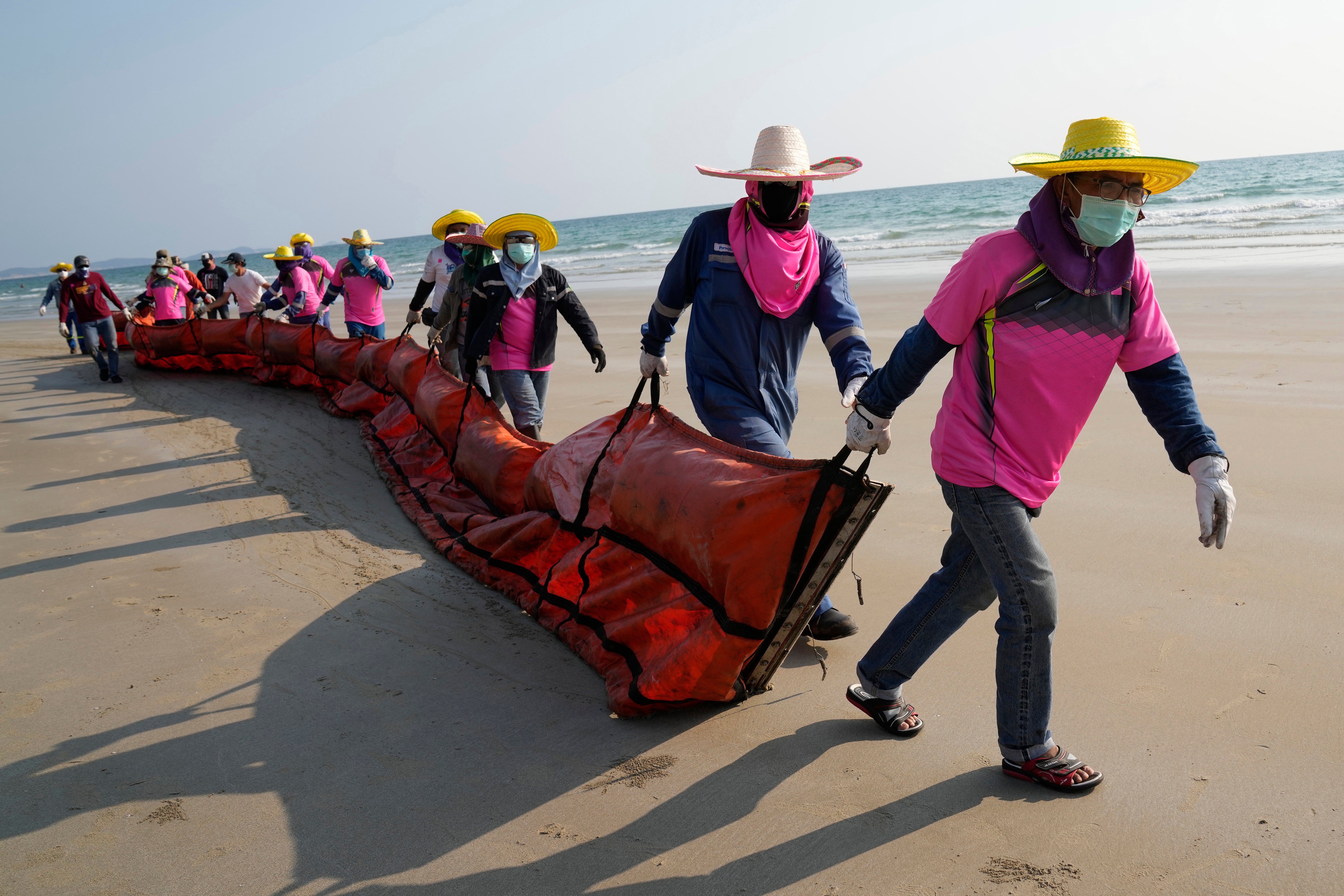Thailand oil slick expected to hit coast, national park
Officials say an oil slick off the coast of Thailand has continued to expand and is approaching beaches on the east coast, home to fragile coral and seagrass

Your support helps us to tell the story
From reproductive rights to climate change to Big Tech, The Independent is on the ground when the story is developing. Whether it's investigating the financials of Elon Musk's pro-Trump PAC or producing our latest documentary, 'The A Word', which shines a light on the American women fighting for reproductive rights, we know how important it is to parse out the facts from the messaging.
At such a critical moment in US history, we need reporters on the ground. Your donation allows us to keep sending journalists to speak to both sides of the story.
The Independent is trusted by Americans across the entire political spectrum. And unlike many other quality news outlets, we choose not to lock Americans out of our reporting and analysis with paywalls. We believe quality journalism should be available to everyone, paid for by those who can afford it.
Your support makes all the difference.An oil slick off the coast of Thailand continued to expand Friday and was approaching beaches on the east coast, home to fragile coral and seagrass, officials said.
The oil leak from an undersea hose at an offshore mooring point used to load tankers was stopped early Wednesday morning, but not before 140 to 375 barrels, or between about 22,000 and 60,000 liters (5,800 to 15,850 gallons), spilled into the Gulf of Thailand, according to Star Petroleum Refining, the operating company.
There are now two slicks, a small one about one square kilometer (less than half a square mile) that is closer to the coast and another that has broadened to 47 square kilometers (18 square miles) that is not far behind it, said Siam Lawawirojwong, director of the department that deals with disasters at Thailand's Geo-Informatics and Space Technology Development Agency.
The Royal Thai Navy, which has been part of the cleanup and containment effort, said the main slick is expected to reach an area of coast including the Khao Lam Ya National Park by about 10 p.m. The park is home to a variety of seabirds and fish.
In preparation, floating booms were being deployed to try and trap the oil and contain it so that it can be collected from the surface and removed.
“Cleaning up the oil slicks in the sea may take five to seven days, but if the oil slicks reach the shore, it will take years to rehabilitate the environment,” Thon Thamrongnawasawat, a prominent Thai marine biologist, told The Associated Press.
“So we have to do everything possible not to let it hit the shore,” he said.
Pornsri Sutthanarak, deputy director-general of the Marine and Coastal Resources Department, said Thursday that if the oil reaches the coast, it might also affect 59 acres of coral and 118 acres of seagrass, causing environmental damage that would take time to rehabilitate.
Initial estimates from Thailand's Pollution Control Department were that much more oil had leaked than reported by Star Petroleum Refining, and Siam said it was not possible at this juncture to say exactly how much was in the slicks.
“We cannot estimate the volume of the oil spill from the satellite images,” he said. “To know the volume we need to know the depth of the oil.”
The navy characterized the slick as a “thin film” of oil on the surface of the sea.
The leak occurred at about 9 p.m. local time Tuesday at a mooring station about 20 kilometers (12 miles) southeast of the Map Ta Phut Industrial Estate, south of Bangkok Star Petroleum Refining said.
On Thursday the main slick covered 11.65 square kilometers (4.5 square miles) and Star Petroleum Refining said it had been spraying dispersants on the slick to try and clear it from the surface as it approaches Rayong province beaches.
In all, four ships have been deployed to skim oil off of the sea's surface and another seven have been spraying the dispersants, the company said.